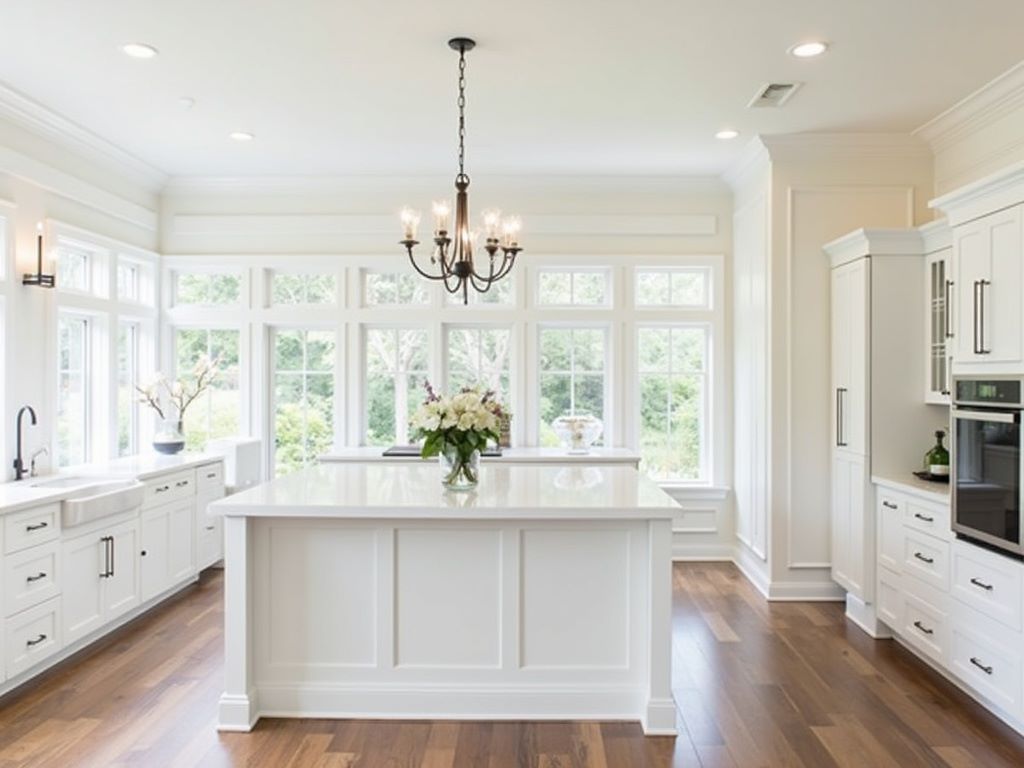
Wainscoting in the kitchen is a timeless design choice that can transform your culinary space. This classic architectural feature adds character, elegance, and functionality to the heart of your home. Let’s explore how wainscoting can elevate your kitchen’s aesthetic and practical appeal.
What is Wainscoting?
Wainscoting is a decorative wall treatment that typically covers the lower portion of a wall. It originated as a protective feature but has evolved into a stylish design element. In kitchens, wainscoting can serve both decorative and functional purposes.
Benefits of Wainscoting in the Kitchen
- Visual Appeal: Wainscoting adds depth and texture to your kitchen walls, creating visual interest.
- Protection: It protects your walls from spills, splatters, and general wear and tear.
- Versatility: Wainscoting complements various kitchen styles, from traditional to modern.
- Value Addition: Well-executed wainscoting can increase the value of your home.
- Customization: It offers endless opportunities for personalization through different styles, heights, and finishes.
Types of Wainscoting for Kitchens
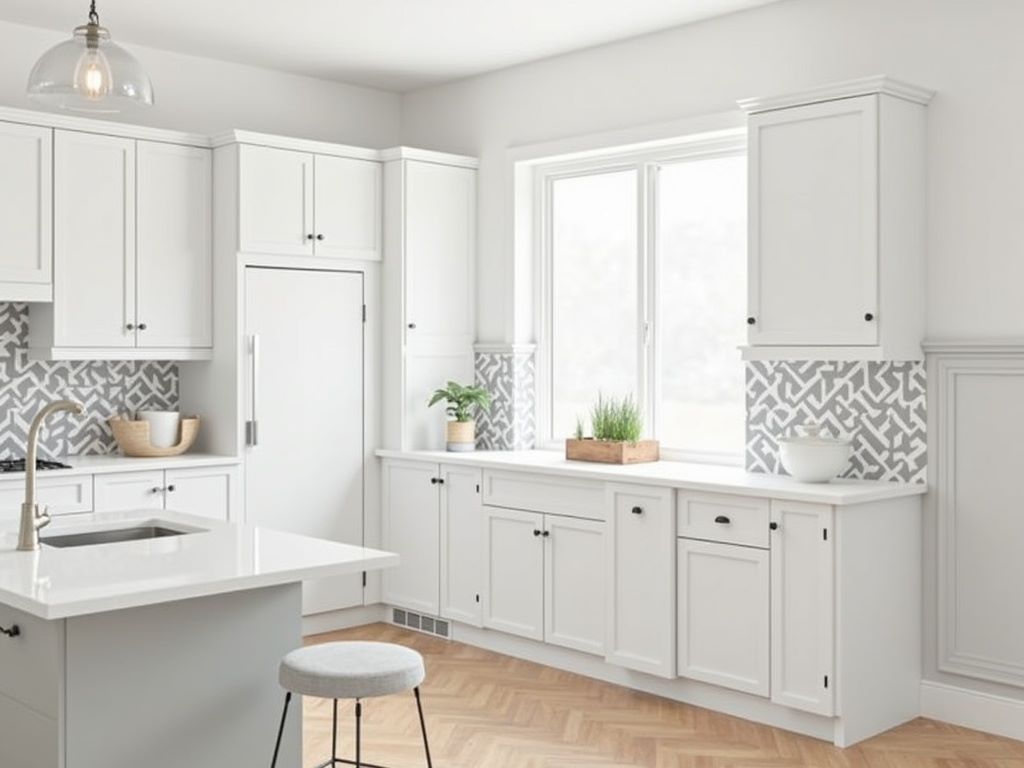
- Beadboard Wainscoting: This classic style features vertical planks and works well in farmhouse or cottage-style kitchens.
- Raised Panel Wainscoting: A more formal option that adds elegance to traditional kitchens.
- Flat Panel Wainscoting: A versatile choice that suits both traditional and contemporary kitchens.
- Board and Batten Wainscoting: This style creates a geometric pattern and works well in modern or transitional kitchens.
- Shaker-Style Wainscoting: A simple, clean-lined option that complements various kitchen styles.
Where to Use Wainscoting in Your Kitchen
- Lower Walls: The most traditional placement, covering the lower third of the walls.
- Backsplash: As an alternative to tile, wainscoting can protect walls behind sinks and stoves.
- Kitchen Island: Add visual interest to your island with wainscoting panels.
- Eating Nooks: Create a cozy atmosphere in breakfast areas with wainscoting.
- Pantry Door: Dress up your pantry with a wainscoting-style door.
Choosing the Right Height for Kitchen Wainscoting
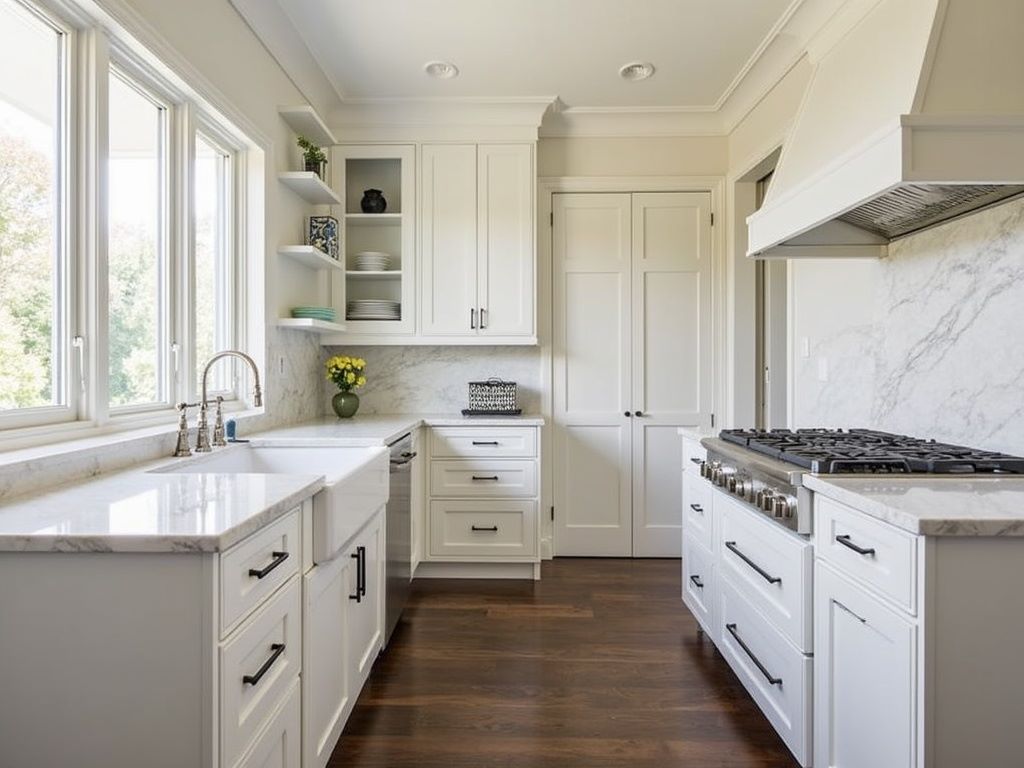
The height of your wainscoting can significantly impact your kitchen’s overall look:
- Traditional Height: Typically 32-36 inches, aligning with countertop height.
- Chair Rail Height: Around 48 inches, creating a more dramatic look.
- Full Wall: For a bold statement, consider wainscoting that extends from floor to ceiling.
- Custom Height: Align with windows or other architectural features for a cohesive look.
Color Choices for Kitchen Wainscoting
The color of your wainscoting can dramatically affect your kitchen’s ambiance:
- White: A classic choice that brightens the space and pairs well with any color scheme.
- Navy Blue: For a bold, sophisticated look that adds depth to your kitchen.
- Grey: A versatile neutral that complements various kitchen styles.
- Green: From sage to forest, green wainscoting adds a natural, fresh feel to kitchens.
- Wood Tones: For a warm, rustic feel, consider natural wood wainscoting.
Pairing Wainscoting with Other Kitchen Elements
To create a cohesive look, consider how wainscoting pairs with other kitchen features:
- Cabinetry: Choose wainscoting that complements your kitchen cabinet styles.
- Countertops: Coordinate your wainscoting color with your countertop material for a harmonious look.
- Flooring: Ensure your wainscoting choice complements your kitchen flooring. For durable options, consider waterproof flooring.
- Backsplash: If using wainscoting as a backsplash, ensure it coordinates with any tile work in your kitchen.
- Lighting: Enhance your wainscoting with appropriate lighting. Consider pendant light designs to highlight your wainscoting.
DIY vs. Professional Installation
While installing wainscoting can be a DIY project, it requires precision and skill. Here are some factors to consider:
- Skill Level: Professional installation ensures a polished look, especially in tricky areas like corners and around appliances.
- Time: DIY installation can be time-consuming, whereas professionals can complete the job more quickly.
- Tools: Professional installers have specialized tools that may not be readily available to homeowners.
- Cost: While DIY can save money, professional installation guarantees a high-quality finish that can add value to your home.
Maintaining Your Kitchen Wainscoting
To keep your kitchen wainscoting looking its best:
- Regular Cleaning: Wipe down with a damp cloth and mild cleaner to remove kitchen grease and splatters.
- Touch-Up Painting: Address any chips or scratches promptly to maintain a fresh look.
- Seal Properly: In areas prone to moisture, ensure your wainscoting is properly sealed to prevent water damage.
- Avoid Harsh Cleaners: Use gentle cleaning products to protect the finish of your wainscoting.
Creative Uses for Wainscoting in the Kitchen
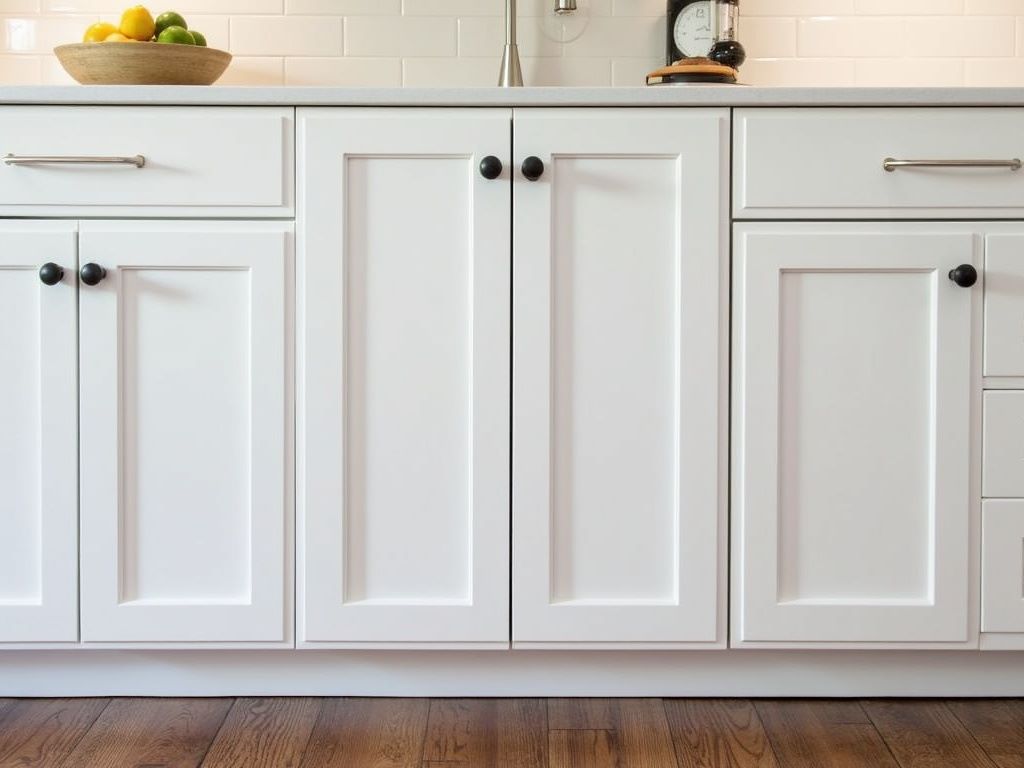
Think beyond traditional applications with these creative ideas:
- Wainscoting Ceiling: Create a unique look by applying wainscoting to your kitchen ceiling.
- Wainscoting Cabinet Doors: Refresh your cabinets by adding wainscoting panels to the doors.
- Movable Wainscoting Panels: Create flexible room dividers with wainscoting panels on casters.
- Wainscoting Range Hood: Cover your range hood with wainscoting for a cohesive look.
- Wainscoting Window Treatments: Frame your kitchen windows with wainscoting for added charm.
Wainscoting in Different Kitchen Styles
Wainscoting can adapt to various kitchen styles:
- Traditional: Choose raised panel wainscoting for a classic, elegant look.
- Modern: Opt for flat panel or board and batten wainscoting in sleek colors for a contemporary feel.
- Farmhouse: Beadboard wainscoting pairs perfectly with farmhouse-style kitchens.
- Coastal: Light-colored wainscoting can contribute to a beach house vibe in your kitchen.
- Industrial: Combine wainscoting with metal elements for an industrial chic kitchen.
Eco-Friendly Wainscoting Options
For environmentally conscious homeowners, consider these eco-friendly wainscoting options:
- Reclaimed Wood: Use salvaged wood for a sustainable and unique wainscoting look.
- Bamboo: A fast-growing, renewable resource that makes excellent wainscoting material.
- Recycled Plastic: Some companies offer wainscoting made from recycled plastic materials.
- Low-VOC Paints: When painting your wainscoting, opt for low-VOC paints to reduce environmental impact.
- Eco-Friendly Building Materials: Research sustainable options for your wainscoting project.
Combining Wainscoting with Other Wall Treatments
Create a unique look by combining wainscoting with other wall treatments:
- Wallpaper: Use wainscoting wallpaper above traditional wainscoting for added texture and pattern.
- Tile: Combine wainscoting with decorative tile for a stunning backsplash effect.
- Exposed Brick: Pair wainscoting with exposed brick for an industrial-chic kitchen look.
- Textured Paint: Use textured paint above wainscoting to add depth to your kitchen walls.
- Stone Veneer: Combine wainscoting with stone veneer for a rustic, natural look.
Conclusion
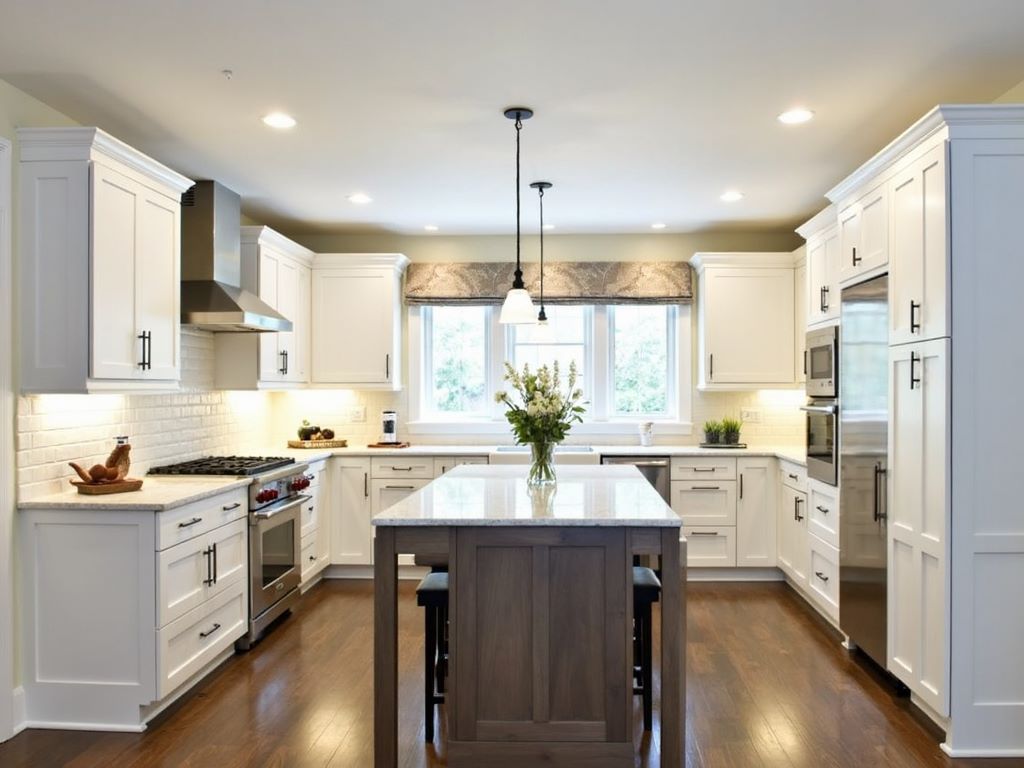
Wainscoting in the kitchen offers a perfect blend of style and functionality. Whether you’re aiming for a traditional, modern, or eclectic look, wainscoting can enhance your kitchen’s aesthetic while providing practical benefits. By carefully considering factors like style, color, and placement, you can use wainscoting to create a stunning kitchen that reflects your personal taste and enhances your home’s overall design. Remember, the key to successful kitchen wainscoting is in the details – from the type of wainscoting you choose to how you maintain it. With thoughtful planning and execution, wainscoting can transform your kitchen into a truly remarkable space that you’ll enjoy for years to come.



